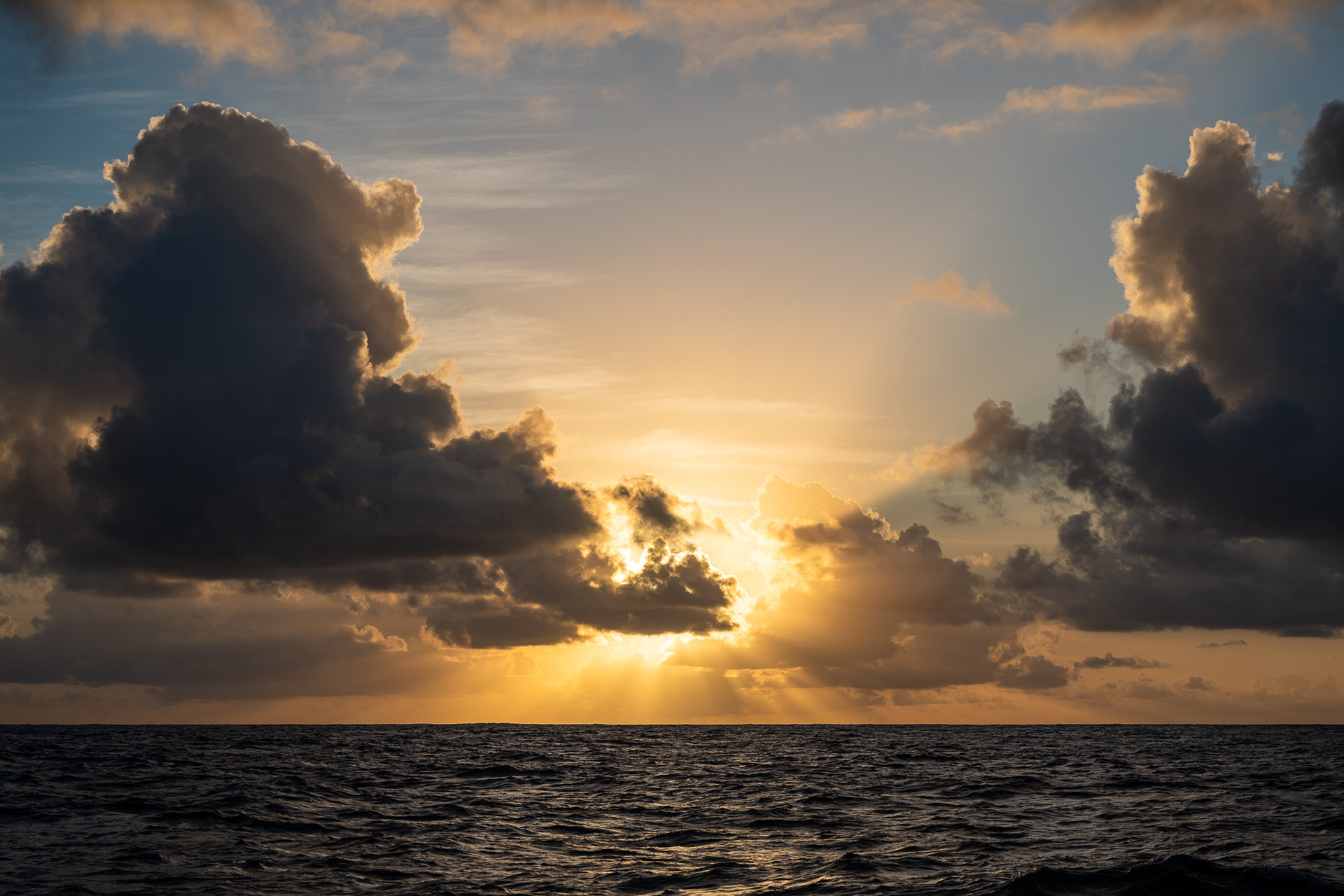04/22/25 - “Fish on!!” “Already?” I reply. Not five minutes after setting out the fishing lines, small lures today in hopes of catching some mahi-mahi, the beloved Tiagra 50w drag was screaming sweet music. Unbeknownst to me, that sweet music would turn into over three hours of groaning as I worked for every inch of line, pulling in what would be already yet another record for me – a yellowfin tuna, second anal and dorsal fins trailing over a foot long, a sure sign of an absolute monster of over one hundred pounds, and potentially as high as 150. In an act of sheer impatience and exhaustion, the rash decision to muscle the fish in the last 50 feet to the boat cost me everything, and the line went “thwang!”.
04/23/25 - Sailing efficiently and effectively can wholly consume passage making, and especially over extreme distances as the over 4,000 miles from Panama to the Marquesian islands of French Polynesia. The ‘white’ sails that come standard on every single boat are great in moderate to heavy conditions, but as the wind lightens up or turns behind us, their small size and non-optimized shape become apparent. Enter the world of carrying an arsenal of head sails, each tailor-made for specific wind scenarios, speeds, and angles. On board Stardust, we have the standard main and 90% jib, as well as three more sails: code zero, code five (gennaker), and symmetrical spinnaker. In the order described, these sails are meant for deeper and deeper wind angles, meaning the wind is coming from behind. All three are much bigger than the jib, and made from higher-tech materials as well. Being that the wind today was from almost due behind us (which would be 180 degrees true wind angle), the symmetrical spinnaker was the obvious choice. Not just for wind angle, but also the fact that we can fly the sail by itself with no main, exposing all of our solar panels to sunlight for maximum eletrical generation.
04/24/25 - As much as sail selection as discussed yesterday makes for efficient and effective passage making, as does the choice of route. The great circle route pointing directly to our destination sounds like an obvious choice, but especially in the Pacific Ocean, we have currents to contend with. Between the Galapagos and Marquesas runs the Humboldt current, pushing west at speeds up to two knots. Given averaging 150 miles a day is generally excellent for any passage making vessel, adding an additional 48 miles a day (2 knots x 24 hours) suddenly becomes quite appealing, and as such the hunt to stay in the current is as important as wind. Herein lies the tricky part – the Humboldt current runs north of the grea circle route, meaning it also lies north of the more established south-easterly trade winds. Is it better to gain a potential 48 miles per day but suffer through light wind, or forego the free miles in search of stronger, more reliable wind? Being how well Stardust manages in lighter conditions than most any other catamaran, we’ll be staying north.
04/25 - Working our way west means we continue to struggle with generating enough solar power each day. With the wind pushing our sails to the right side of the boat, the same side the sun is shining, solar capture is low, and by 2pm is has almost completely shut off as the sun starts to set in front of us. I’ve grown tired of thinking of low energy dinners to make, as an all-electric galley is the chief energy culprit while at sea. Since catching the two tunas on Sunday, almost every dinner has been either ceviche, poke, or once Ika Mata served with either rice, leftover rice, pasta, or leftover pasta. I yearn for a nice, hot-cooked meal.
04/26 - Slow and steady wins the race is an adage that I’ve had to keep in the back of my mind lately. Spoiled by the 1,000 miles sailed in the five days after rounding the Galápagos Islands, a 180 mile day is excellent, and we’re averaging more like 170. The decision to stay north to keep with current at the cost of low wind is more and more apparent each day with dwindling wind. The good news on the flip side is that as we speak, we still have a 1.5 knot current pushing us from directly behind. Despite some slower sailing, that still means a free 36 miles a day. I’ll take that.

Wispy threads of rain hang down from a squall cloud like jellyfish tentacles
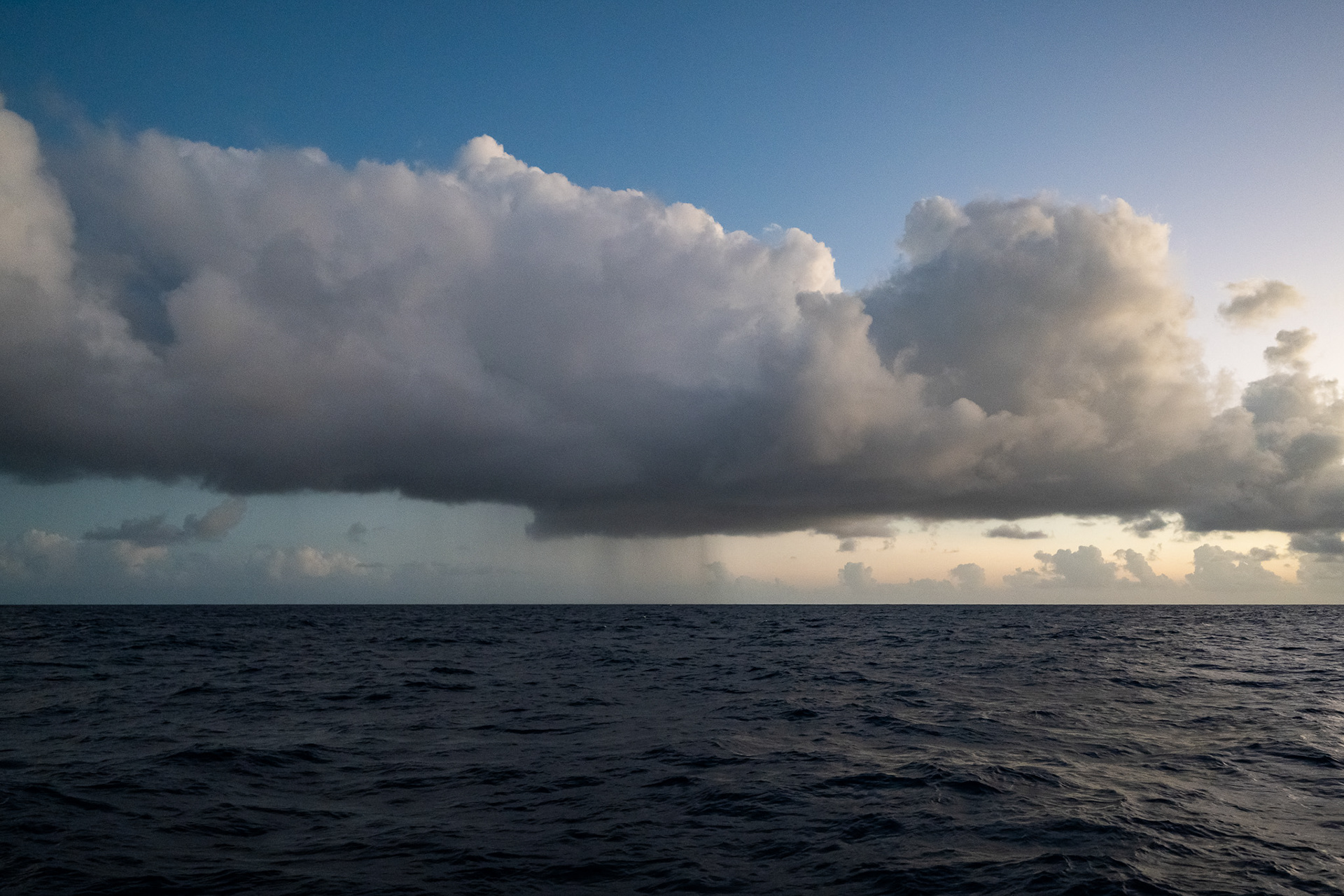
Spot the squall?

Easy going with just the s4 spinnaker pulling us along
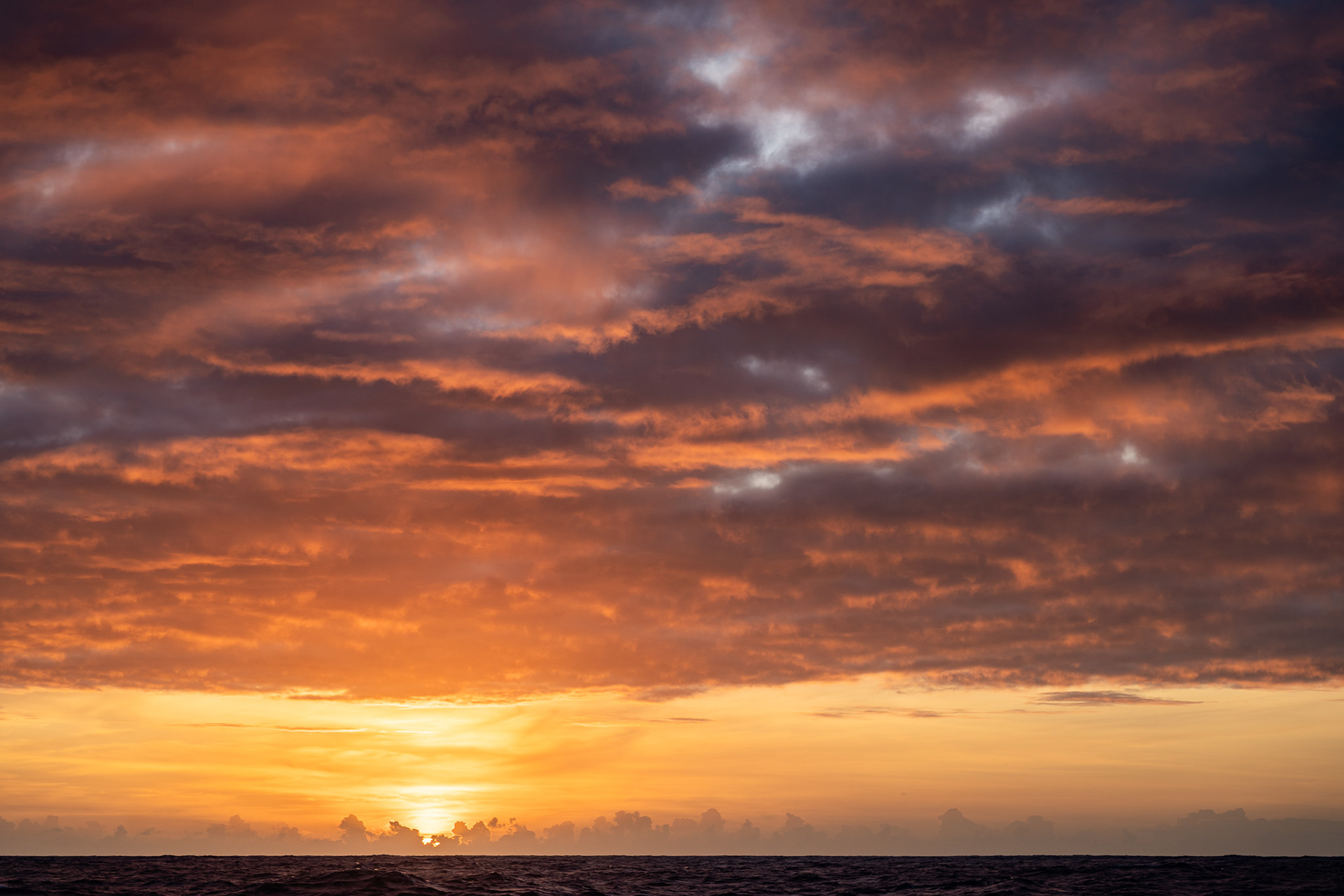
A golden orange sky

Golden hour fading into blue hour
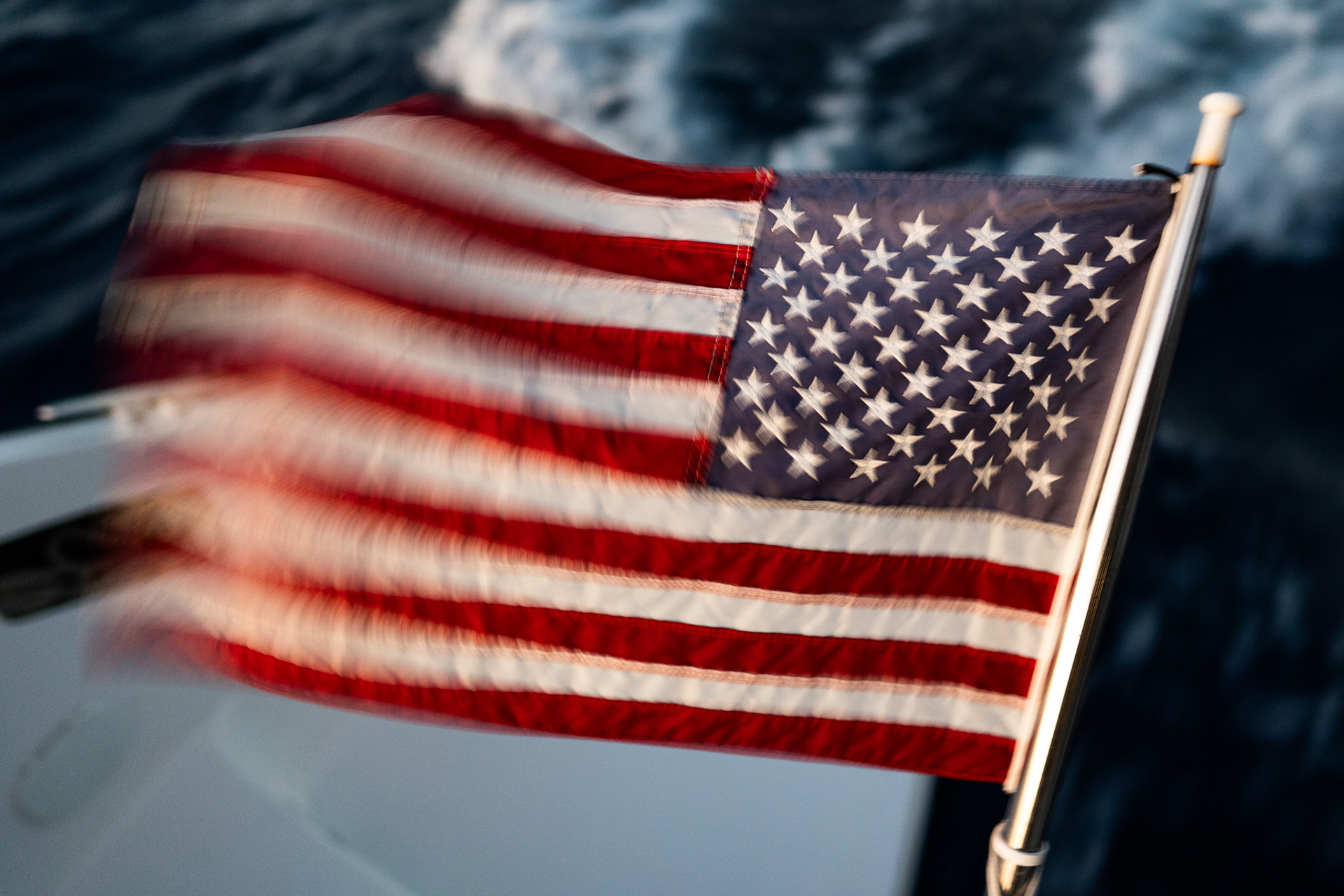
Our pavilion flapping in the breeze
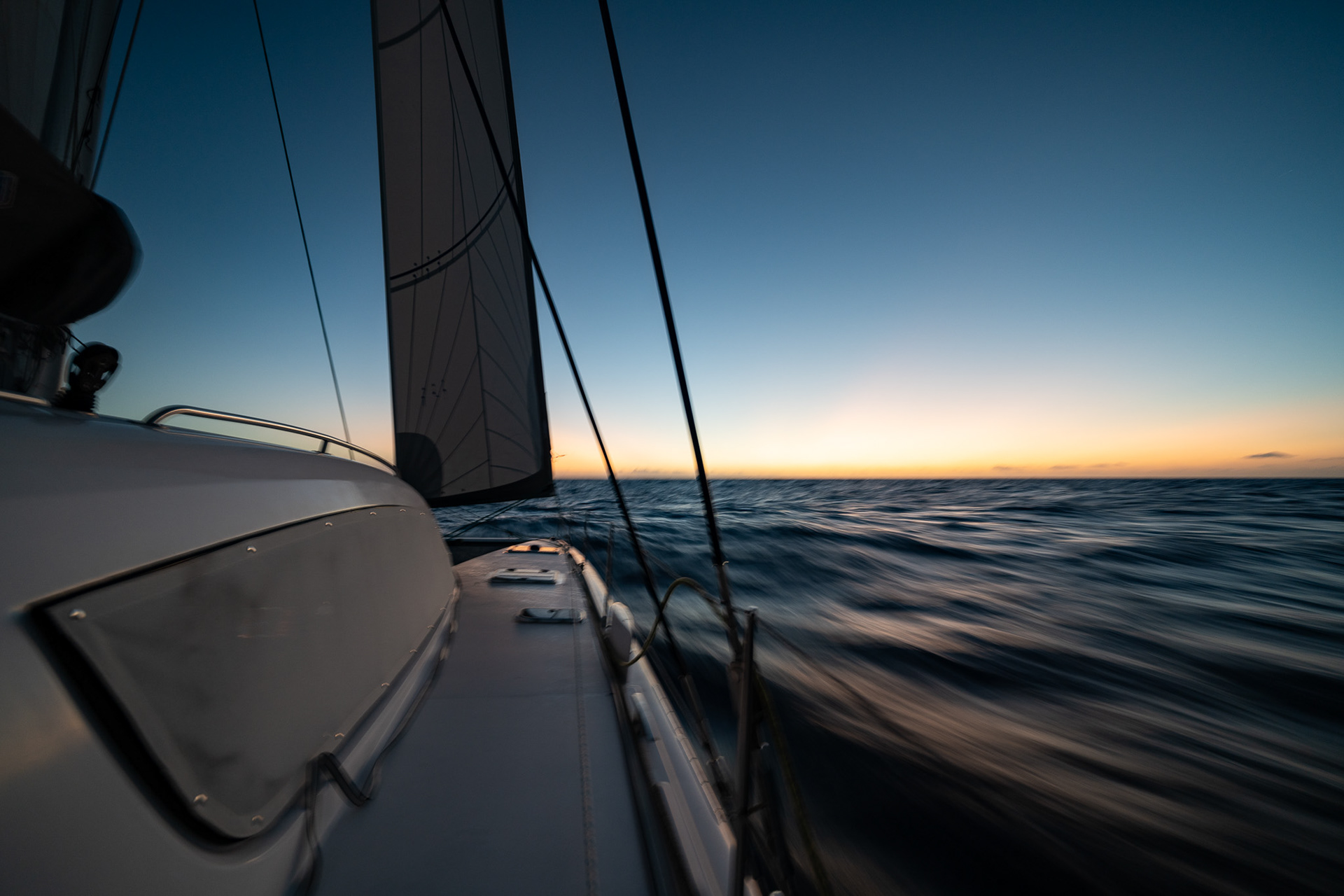
Flying along after a passing cloud gives us a wind boost
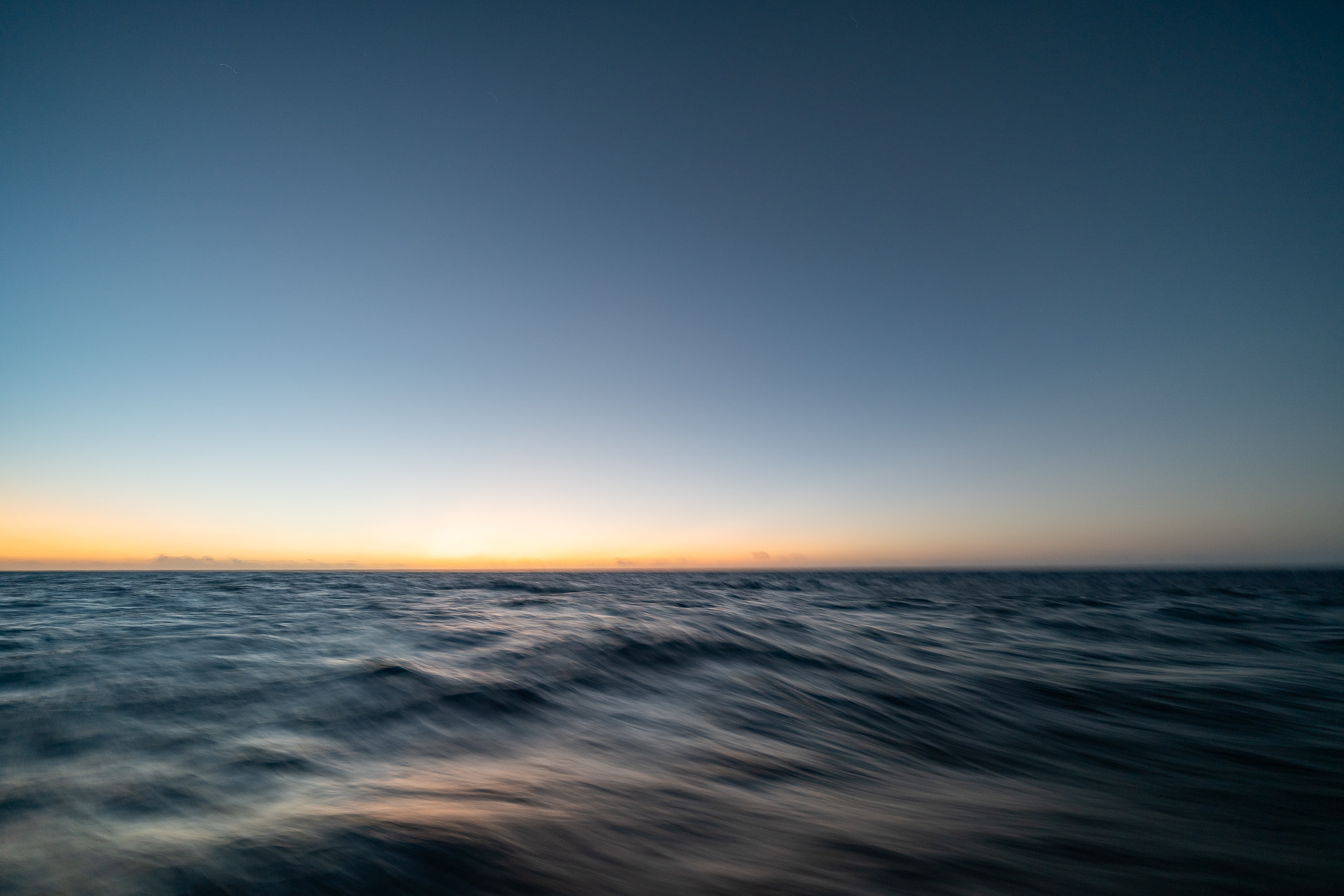
Serene blue hour
